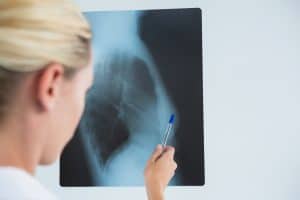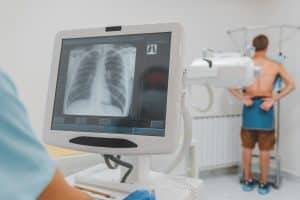Breast cancer remains one of the most prevalent forms of cancer affecting women across the globe, including in bustling Canadian cities like Toronto, Brampton, Whitby, and Niagara Falls. With ongoing research and advancements in medical imaging, understanding the risk factors of breast cancer and the importance of early detection through mammography is more vital than ever. Valence Medical Imaging, a leader in breast imaging, is committed to providing state-of-the-art diagnostic tools and educating women on the pivotal role of mammography in breast cancer screening.
Understanding Breast Cancer Risk Factors
Risk factors for breast cancer are multifaceted and can be divided into modifiable and non-modifiable categories. Non-modifiable risk factors include:
- Age: The risk of developing breast cancer increases with age.
- Genetics: A history of breast cancer in the family, especially close relatives like a mother or sister, can elevate risk.
- Personal Health History: Previous breast conditions, such as hyperplasia or carcinoma in situ, may increase risk.
- Dense Breasts: Women with dense breast tissue have a higher risk of breast cancer and it can make tumors harder to spot on mammograms.
Modifiable risk factors are lifestyle-related and can be altered to reduce risk:
- Alcohol Consumption: Regular alcohol intake is linked to a higher risk of developing breast cancer.
- Weight and Diet: Obesity and a diet high in saturated fat can elevate risk, especially after menopause.
- Physical Activity: Lack of regular exercise can contribute to an increased risk of breast cancer.
Understanding these factors is critical in assessing an individual’s risk and determining the most appropriate breast cancer screening schedule.
The Role of Mammography in Breast Cancer Screening
Mammography is a specialized form of breast imaging that uses low-dose X-rays to detect cancer early — before women experience symptoms. At Valence Medical Imaging, we offer:
- Digital Mammogram: Utilizing advanced digital imaging technology, digital mammograms offer clearer images and allow for enhanced evaluation of breast tissue.
- Breast Tomosynthesis: Also known as 3D mammography, this cutting-edge procedure increases detection rates and reduces false positives by providing a more detailed look at breast tissue.
- Diagnostic Mammogram: This is often performed after a potential abnormality has been identified in a screening mammogram or if a woman has breast symptoms.
Why Mammography is Relevant to Breast Cancer Risk
Regular mammograms can reduce the risk of dying from breast cancer. Early detection via a mammogram means that treatment can be started earlier in the course of the disease, possibly before it has spread. Mammograms can detect tumors that are too small to feel and can find ductal carcinoma in situ (DCIS), which is a cancer that is confined to the milk ducts and is nearly 100% curable.
BI-RADS Classification and Its Importance
The Breast Imaging-Reporting and Data System (BI-RADS) classification is essential for standardizing mammogram reporting and determining follow-up. The BI-RADS score, ranging from 0 to 6, helps radiologists at Valence Medical Imaging categorize findings and recommend next steps, including additional imaging or a breast biopsy.
Considerations Around Radiation Exposure
Although mammograms use low doses of radiation, there is some concern about exposure, especially for women with dense breasts who may need more frequent screening. Valence Medical Imaging utilizes state-of-the-art technology to minimize radiation exposure while ensuring high-quality images.
Additional Breast Imaging Techniques
For women with dense breasts or those who require further evaluation following a mammogram, additional imaging techniques are available:
- Breast Ultrasound: This uses sound waves to outline a part of the body and can help determine if a breast lump is solid (which may be cancer) or filled with fluid (a cyst).
- Breast MRI: Often used in conjunction with mammograms for high-risk patients, MRI uses magnets and radio waves to take pictures of the breast.
- Breast Biopsy: When a suspicious area is detected on a mammogram, a biopsy may be performed to determine whether it’s cancerous.
At Valence Medical Imaging, our commitment is to ensure that women in Toronto, Brampton, Whitby, and Niagara Falls have access to the best breast cancer screening technologies. Understanding breast cancer risk factors and the relevance of mammography in early detection is key to battling this disease. Our team of experts is dedicated to providing compassionate care, comprehensive education, and leading-edge breast imaging services to empower women to take charge of their breast health.
Regular screening mammograms can save lives by finding breast cancer early, when it’s most treatable. We encourage all women to discuss their individual risk factors with their healthcare provider and to establish a screening schedule that is right for them. For more information or to schedule an appointment, contact Valence Medical Imaging — your partner in breast health.





